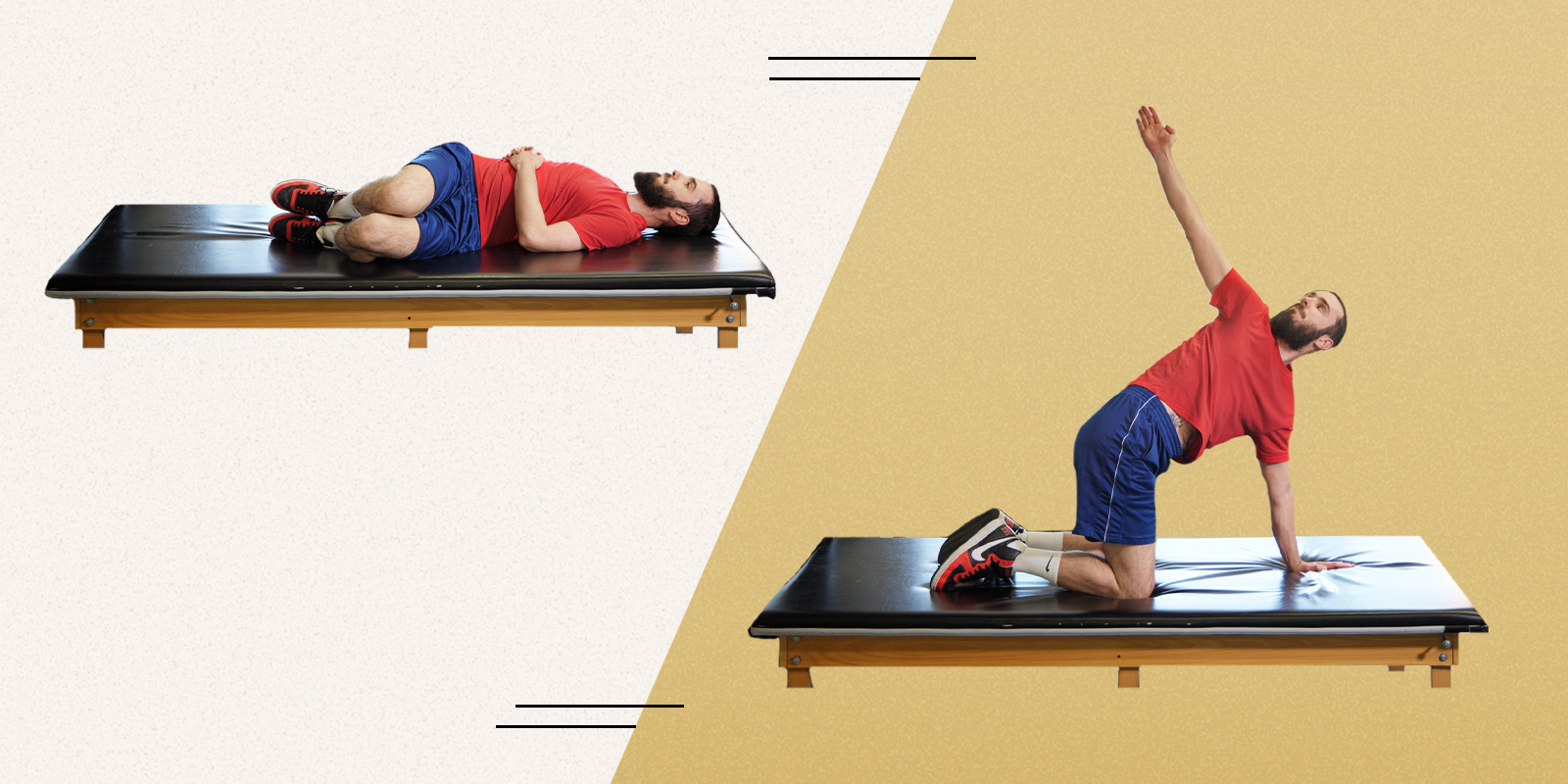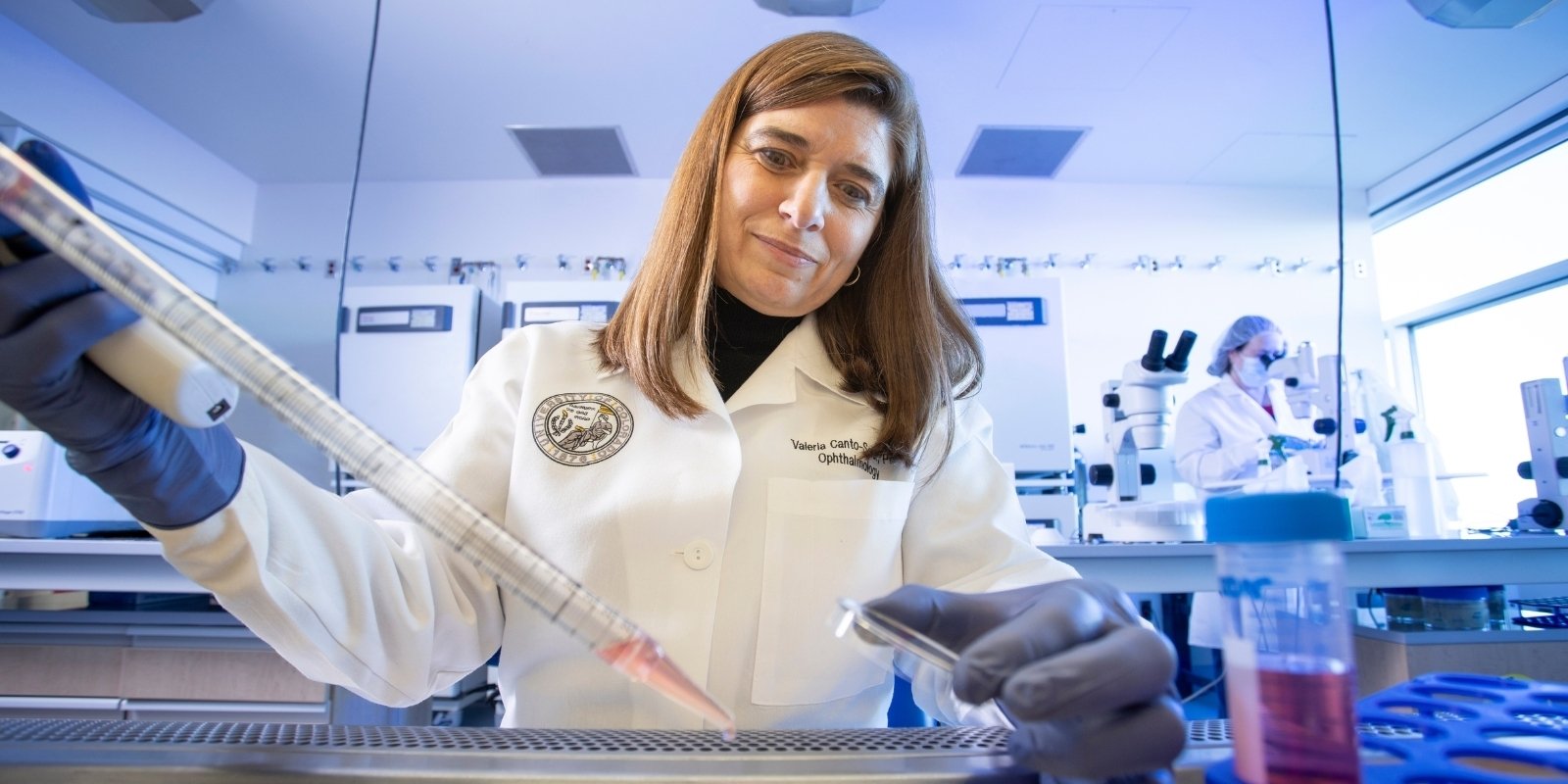Tears still cloud Patrick Brenner’s eyes when he recalls childhood. Even now, as a father of three, memories of middle-school bullies and biased looks throughout adulthood darken his outlook on a life spent hiding his smile.
A congenital defect left Brenner with only two molars and four crooked front teeth, a target for mean kids and, later, a cause for hurtful assumptions by adults: Didn’t he take care of his teeth? Is he a “meth-head”?
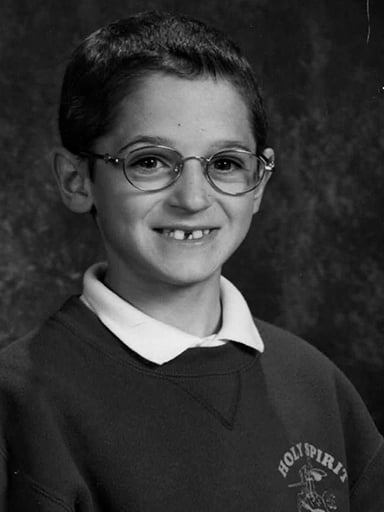
Patrick Brenner in childhood |
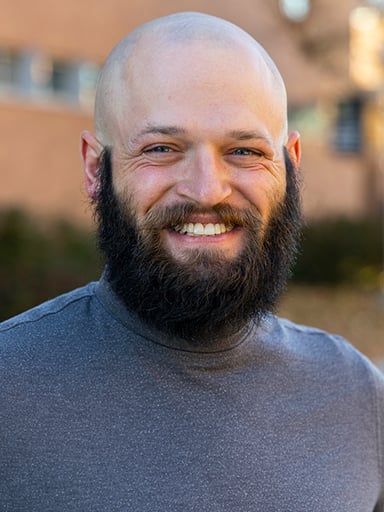
Patrick Brenner now |
His parents scraped together enough money for a partial bridge, easing Brenner’s high school years. But lost insurance battles and high price-tags blocked Brenner from ever having a fully functional mouth.
This month, just into the holiday season, the University of Colorado School of Dental Medicine gave Brenner the gift he’s always wanted. Through a special partnership and the care of a talented student, Brenner now boasts a sparking smile for the New Year – and, most likely, a friendship for life.
“We’ve been a good team, haven’t we?” fourth-year dental student Enerel (Eva) Otgonbayar said to a giddy Brenner, reclining in a dental chair for his final appointment on Dec. 3.
His resounding “Yes!” – heard over the loud chatter of a packed CU Dental Team Care Clinic – left little doubt Brenner agreed. In fact, he said his time at the student-run clinic on the CU Anschutz Medical Campus was the best dental experience he’d ever had.
‘I felt like I had to earn his trust’
No stranger to dental visits, Brenner battled stares, bone loss and chewing challenges all his life because of a genetic defect on his X-chromosome. Called X-linked hypo-hidrotic ectodermal dysplasia (XLHED), the rare disorder comes in many types with varied symptoms, often stealing children’s teeth.
About 18 months ago, Brenner spotted a program on the National Foundation for Ectodermal Dysplasias (NFED) website that linked university dental programs with patients with the defect. A call back from the CU dental school brought Brenner cautious hope.
“When he first came in, he was very frustrated with the dental work he previously had, so he was kind of skeptical,” Otgonbayar said. “I felt like I had to earn his trust.”
And she did.
‘You assume meth mouth, or something like that’
“My first appointment, I flew up here, super nervous, super on edge, totally unsure about the process,” said Brenner, also worried about the time and travel commitment he would make to the Aurora campus as a New Mexico resident. “And I think a lot of that was based on really bad negative experiences in my past with dentists. You see a mouth like mine, and you assume meth mouth, or something like that,” he said.
His fears of a bad repeat didn’t pan out. “It was the exact opposite,” he said.
Brenner was taken by Otgonbayar’s caring manner and professionalism. The expertise – and good jokes – of her mentor who oversaw the nine-month process, David Gozalo, DDS, also erased Brenner’s skepticism.
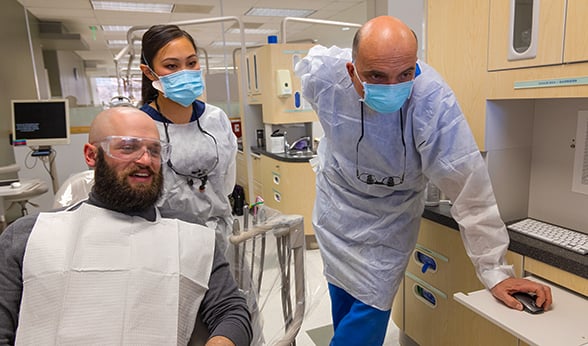 Patrick Brenner, Eva Otgonbayar and David Gozalo look at Brenner's new smile on a computer screen. Patrick Brenner, Eva Otgonbayar and David Gozalo look at Brenner's new smile on a computer screen.
|
Another deal-maker came during the trio’s first meeting. “Dr. Gozalo and Eva asked me what my priority was,” Brenner said. “I didn’t even know how to answer them, because I hadn’t been asked that before.”
The important question guides her plans when creating Brenner’s new smile, Otgonbayar said. Brenner eventually said he wanted a great-looking smile for the first time in his life, affecting Otgonbayar’s engineering decisions when creating his smile.
“If patients have a high aesthetic demand (over function), I have to know what that is in order to tell them if I can meet those expectations,” she said.
She could, clinching Brenner’s decision to commit to the dental school clinic, which gave him a smile that he could afford and Otgonbayar an invaluable learning experience.
Brenner’s new mouth: ‘all Otgonbayar’
A complex case, Otgonbayar faced designing Brenner’s smile by combining attractive bridges and functional prosthetics.
Set to graduate in May before heading to UTHealth San Antonio for a residency in prosthodontics, she’d worked complex cases during her time at CU’s dental school with Gozalo, her chief mentor. Gozalo, a clinical associative professor of restorative dentistry, helped guide her all the way to residency choices, Otgonbayar said.
“He’s impacted my education a lot,” she said. Although he oversaw her work throughout the case, Gozalo said Brenner’s new mouth was “all Otgonbayar.”
Mainly focused on the “aesthetic zone,” Otgonbayar created two bridges for Brenner’s front teeth, transforming his smile. Called Fixed Dental Prosthesis (FDP), they look, feel and work like natural teeth. She used porcelain-fused zirconia, combining the well-researched strength of zirconia with the beauty of porcelain, Otgonbayar said.
For the back teeth, she created a conventional removable partial denture – but with a functional twist. Because of Brenner’s aesthetic wishes, she used a “rotational path RPD,” providing a solid hold minus the noticeable clasps on every tooth, as traditional partials include.
"… artistic masterpiece. It really is creative genius."
– Patrick Brenner on his new smile
“It rotates into an undercut that we purposely created in the bridge itself to lock into that undercut and then snap back into the unseen clasps that hold on to the back teeth,” she said.
“It was the most perfect-fitting partial denture I had ever worn,” Brenner said. “And I’ve worn a lot.”
‘Artistic masterpiece: It really is creative genius’
Impressed by the expertise and technology within the school, Brenner never thought twice about having a student in charge of his ultimate dream. “She had access to the greatest team of specialists at this school that oversaw everything that she was doing.”
Wowed from the start by a 3-D wand Otgonbayar used to create impressions of his mouth without the goop, Brenner said she went above and beyond in scheduling and working remotely and behind the scenes to optimize his long-distance visits. “And the ability of them to 3-D print everything: I’d never seen that before,” he said.
Just seeing the wax-up of his mouth for the first time was overwhelming, Brenner said. “They delivered the treatment plan to me over Zoom and, wow. I cried. I looked at the wax mock-up, and I recognized that as my mouth, but my mouth corrected,” Brenner said, apologizing as he paused to push back tears.
“I’d just been picked on my whole life for having stupid teeth, and here I was with a group of professionals that truly seemed like they truly cared and love the work that they do and delivered to me this …” Brenner said, pausing again in search of the next word.
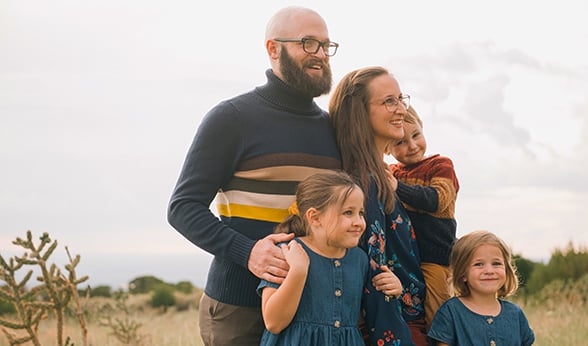
Patrick Brenner and family (Photo by Billy Nguyen)
|
“Artistic masterpiece,” he concluded. “It really is like creative genius.”
‘It just makes everything so worth it’
“Artistry definitely plays a big role in her field,” said Otgonbayar, who has liked sketching since childhood. “To me, dentistry is engineering, science and art.” Cases like Brenner’s take skilled hands and an artistic eye, she said.
“The engineering part goes into treatment planning: What step goes first? Are there different disciplines I need to bring in to work together on this case? And then the science: How does the patient’s bite come together? The functional abilities.”
Her passion for helping people, for art and for the continuous learning of science pulled Otgonbayar toward her field, she said.
At least one person is glad Otgonbayar made her career choice. “She is an artist,” Brenner said. “She is going to do very good things in life.”
After much final adjusting marked by laughter and banter – “We definitely created a bond working together all these months,” Otgonbayar said – she handed the mirror to Brenner for the last time.
The two were quiet for a few seconds, Brenner’s smile juxtaposed with his watery eyes. “Happy,” Brenner finally said, “is an understatement. I’m ecstatic.”
The feeling for Otgonbayar cannot even be described in words, she said. “Just seeing his reaction. Just being able to change a patient’s life like that. That’s what I’m here for. It was probably the most rewarding experience I’ve had in dental school. It just makes everything so worth it.”

